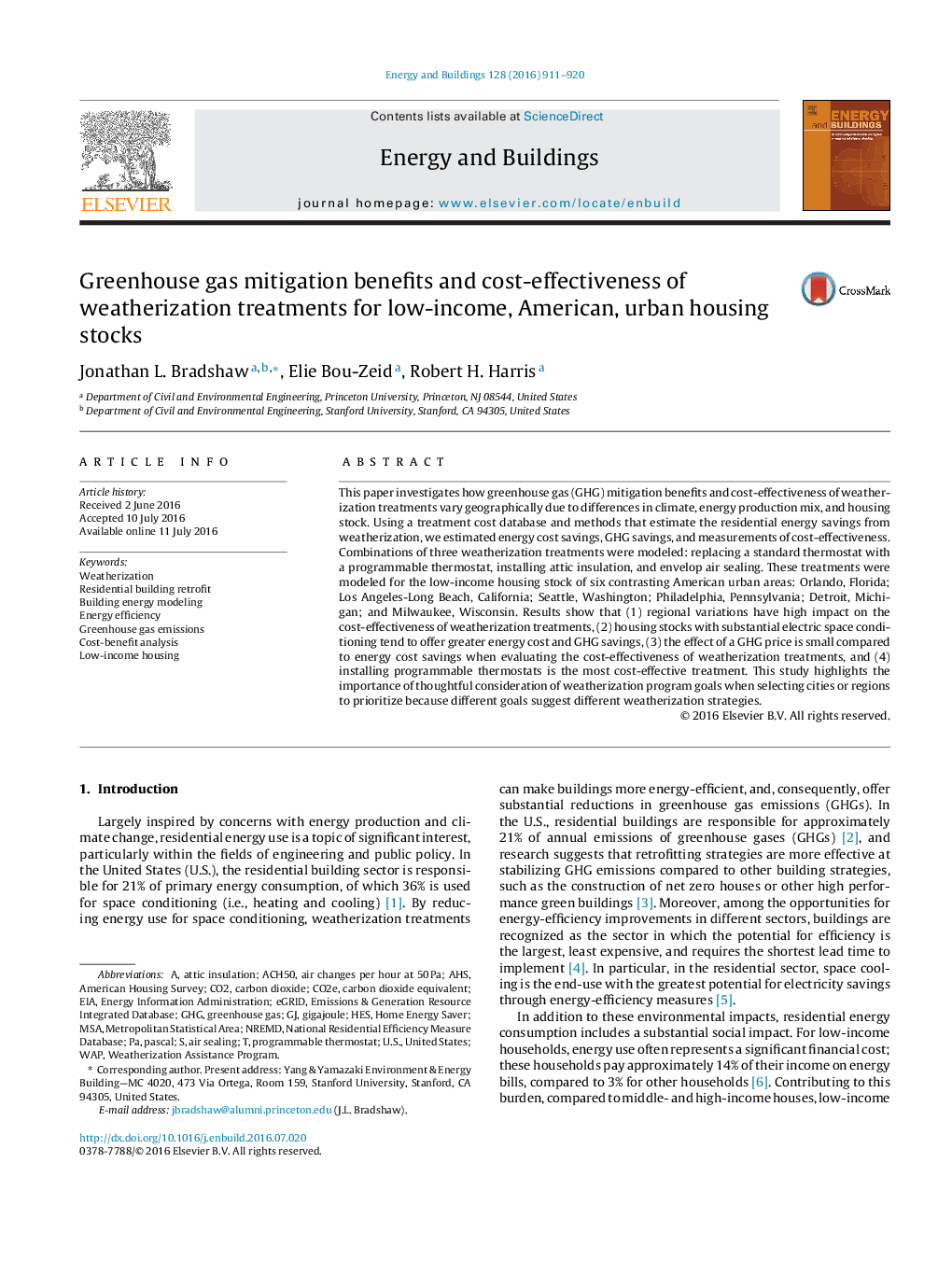| Article ID | Journal | Published Year | Pages | File Type |
|---|---|---|---|---|
| 6729912 | Energy and Buildings | 2016 | 10 Pages |
Abstract
This paper investigates how greenhouse gas (GHG) mitigation benefits and cost-effectiveness of weatherization treatments vary geographically due to differences in climate, energy production mix, and housing stock. Using a treatment cost database and methods that estimate the residential energy savings from weatherization, we estimated energy cost savings, GHG savings, and measurements of cost-effectiveness. Combinations of three weatherization treatments were modeled: replacing a standard thermostat with a programmable thermostat, installing attic insulation, and envelop air sealing. These treatments were modeled for the low-income housing stock of six contrasting American urban areas: Orlando, Florida; Los Angeles-Long Beach, California; Seattle, Washington; Philadelphia, Pennsylvania; Detroit, Michigan; and Milwaukee, Wisconsin. Results show that (1) regional variations have high impact on the cost-effectiveness of weatherization treatments, (2) housing stocks with substantial electric space conditioning tend to offer greater energy cost and GHG savings, (3) the effect of a GHG price is small compared to energy cost savings when evaluating the cost-effectiveness of weatherization treatments, and (4) installing programmable thermostats is the most cost-effective treatment. This study highlights the importance of thoughtful consideration of weatherization program goals when selecting cities or regions to prioritize because different goals suggest different weatherization strategies.
Keywords
American Housing SurveyWAPProgrammable thermostatGHGMSAU.S.AHSCO2eACH50WeatherizationEnergy information administrationGreenhouse gas emissionsHESUnited StatesEIAEnergy efficiencyCost-benefit analysisCarbon dioxideBuilding energy modelingLow-income housingCarbon dioxide equivalentMetropolitan statistical areaPascalCO2Greenhouse gasgigajoule
Related Topics
Physical Sciences and Engineering
Energy
Renewable Energy, Sustainability and the Environment
Authors
Jonathan L. Bradshaw, Elie Bou-Zeid, Robert H. Harris,
